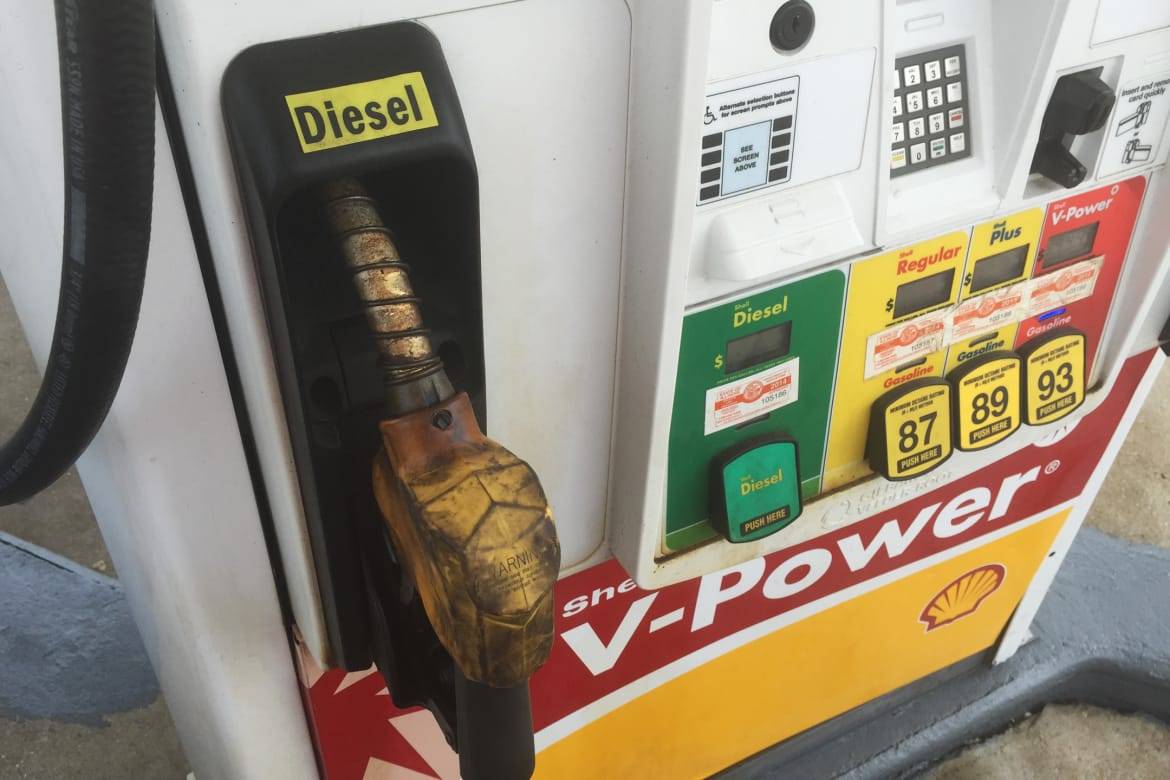Why Diesel Prices Are Steadier Than Regular Gas


The average price for regular unleaded gas has climbed 27 cents per gallon in the past month, but diesel fuel has inched up only 4 cents per gallon.
Why are drivers with vehicles that run on diesel getting a pass while gasoline users have to keep digging deeper to fill their tanks? It’s a combination of seasonal demand, federal regulations and timing.
Gasoline refineries are required by federal regulations to switch to summer gas blends by May 1, and that accounts for part of the recent increase in fuel prices. Summer gas blends cost more to produce, plus the supply shrinks while refineries are changing over from winter blends.
Related: Research Fuel-Efficient Cars
Moreover, there are more than a dozen custom summer gas blends for specific areas, and it takes time for refineries to produce those custom brews and for them to arrive at the right gas stations, further restricting the supply and driving up gas prices.
Diesel fuel, meanwhile, doesn’t change, so refineries keep producing the same low-sulfur diesel variety without interrupting production or the delivery logistics, said Patrick DeHaan, senior petroleum analyst for GasBuddy.com. This means that diesel fuel prices tend to remain more consistent than regular fuel prices.
“With gasoline, a lot of why the price rises every spring has to do with the complexities surrounding the switchover that the EPA requires in the warmer months,” DeHaan said in an interview about the fluctuating cost of fuel.
“Essentially, the diesel standard is the same all year. Gasoline is different. When you make the transition from winter gasoline to summer gasoline, there’s not a whole lot of spare supply, so if there are any refinery kinks the price shoots right up.
“In contrast, you can use ultralow sulfur diesel any day of the year, so the inventories have been built up and they’re absolutely adequate.”
The AAA Daily Fuel Gauge Report said Thursday the national average cost for regular fuel was $2.65, 7 cents higher than a week ago. The average price for diesel increased 3 cents per gallon the past week to $2.84, but in prior weeks, the cost of this type of fuel had hardly budged.
This difference is important for car shoppers considering a vehicle that runs on diesel instead of regular gas. A 2015 Volkswagen Golf with the turbocharged 1.8-liter four-cylinder gets a respectable 29 mpg combined. The 2015 Golf TDI with a diesel engine gets 36 mpg combined, or 24 percent better fuel economy. As of Thursday the price difference between the two fuels was just 7 percent. According to Fueleconomy.gov the opting for a vehicle like the TDI would save you $150 a year on fuel over the regular Golf at these prices.
But the TDI costs $1,350 more than its gas counterpart, meaning it would take nine years at current gas prices to make up the price difference between the two vehicles.
Diesel prices tend to peak in February or early March and then decline after demand for heating oil subsides, said AAA spokesman Michael Green. Gas prices are cheapest during the winter, when demand is lowest.
“Gas prices often peak in the spring when refinery maintenance takes place and there’s less gasoline being produced, and in the summer gas prices stay pretty high simply because so many people are driving,” he said.
Diesel prices have increased for 21 days in a row (gas has gone up 22 straight days), according to AAA, but generally only by fractions of a penny. The increases could get bigger in the next few weeks because farmers will need more diesel fuel to power their farm machinery and vehicles during the spring planting season. Demand also rises during the fall harvest season.
Both DeHaan and Green, though, are optimistic that prices for gas and diesel should start to fall soon because most refineries have completed their annual seasonal maintenance and are running at full strength. That assumes that oil prices won’t jump unexpectedly.
DeHaan noted that the Energy Information Administration reported this week that U.S. refineries were operating at 93 percent of capacity, a robust level.
“As we move on to the summer, if oil prices stabilize, there’s a very good chance that prices will drop” for both gas and diesel, Green said.
Cars.com’s Editorial department is your source for automotive news and reviews. In line with Cars.com’s long-standing ethics policy, editors and reviewers don’t accept gifts or free trips from automakers. The Editorial department is independent of Cars.com’s advertising, sales and sponsored content departments.

Contributor Rick Popely has covered the auto industry for decades and hosts a weekly online radio show on TalkZone.com.
Featured stories


2026 Aston Martin DBX S Review: Excellence in (DB)X S


